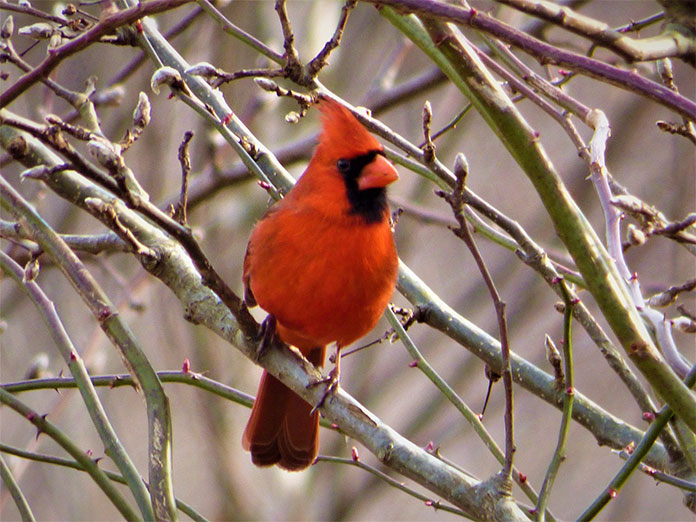
BARNEGAT – As snowbirds of the human variety continue to flock to warmer weather, wildlife inhabitants of one local park use their instincts to cope with the winter cold.
Cloverdale Farm County Park sits nestled between several retirement communities located west of the parkway off of West Bay Avenue. Ninety acres of land remain untouched by the threat of development and serve as a natural refuge.
The park’s history dates back several decades when a local family used the land to farm and harvest cranberries. Bill and Katherine Collins owned the property and watched as Barnegat began to grow with the construction of its first senior development almost 35 years ago.
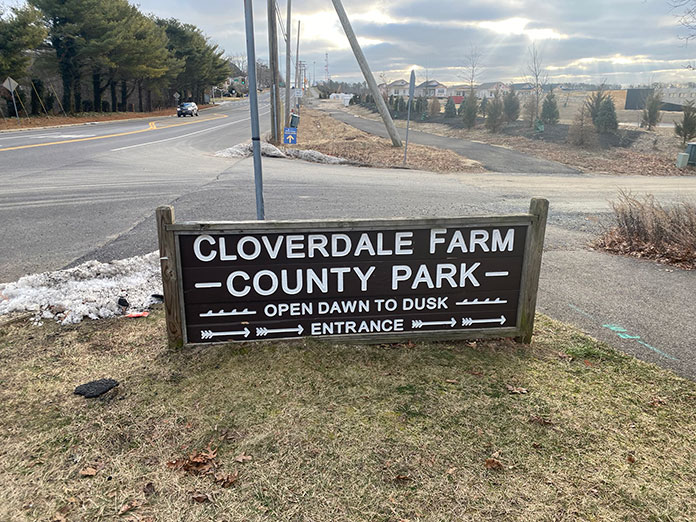
Patti Trasferino, Program Coordinator at Cloverdale, credited Katherine and county government officials for their role in the transformation of the farm to a park in 2004.
“Kathy and the freeholders at the time had the fortitude of thought to recognize that Barnegat was booming with development,” said Trasferino. “Kathy honored her late husband’s wishes to preserve the land and worked to keep it a special place.”
Shoreline Sand & Gravel once occupied the land adjacent to Cloverdale on its east side. The company filed for bankruptcy in 2010 after the mine went non-operational. A decade later, the start of a new development meant clearing what appeared to be a dense interior of trees from the outer roadway.
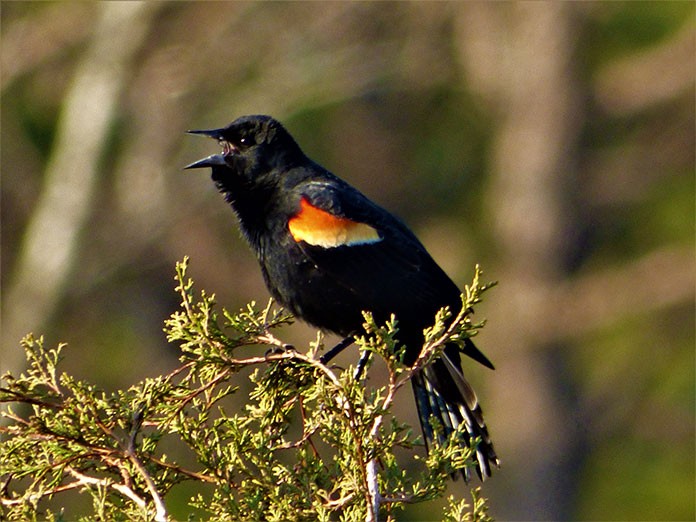
Developer Chris Vernon faced several objections when he began construction of the Cottages at Compass Point last year. A school-aged girl even showed up at a planning board meeting when the project first came under consideration. She wanted to know what would happen to the animals who called that area their home.
Trasferino shared her personal observations concerning the impact of the land clearing on its natural inhabitants.
“Most of the land back there was predominately gravel pits and graded through,” Trasferino opined. “It was not hosting or serving as a natural habitat for wildlife.”
A timelapse review of Google Earth confirms a large area of barren land that existed before construction began on the Cottages. While most of the trees removed for the project served as the buffer on West Bay Avenue, the developer also eliminated a number from the northwest portion of the development.
Frank Langella, a resident at Four Seasons at Mirage, routinely heads across the street to Cloverdale. Langella said he only skips rainy days and initially checked out the park at the suggestion of a friend.
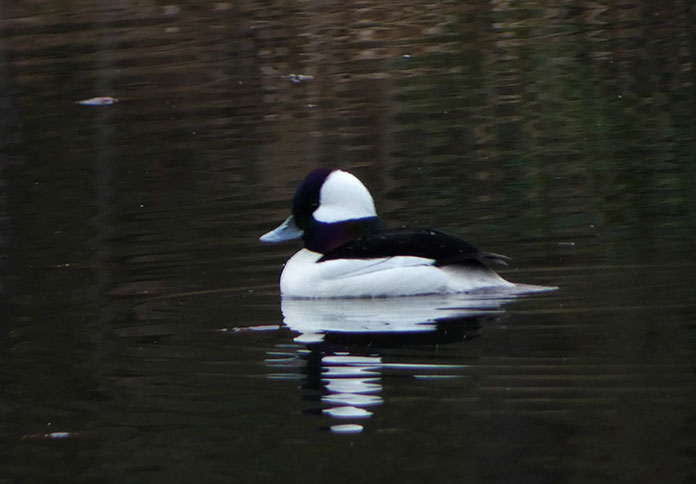
A transplant from Bergen County, Langella retired from his job as a warehouse operations manager in 2010. His wife suggested that he find something to do with his newly found spare time.
“I was a hunter and a fisherman, and I knew some things as a result of being in the woods,” shared Langella. “I was never a birder.”
Within no time, things changed. Langella took advantage of his already existing collection of camouflage clothes to blend in with the environment. He picked up an inexpensive camera that didn’t include big lenses or fancy add-ons and then got to work.
“I just stay very quiet and am amazed at how many things come close,” Langella said. “When you become part of their surroundings, their world, they (the animals) pick up because you’re not a threat. You get to see a lot.”
Langella emphasized that he doesn’t consider himself a professional photographer by any means. However, his voice took on a tone of excitement as the longtime hunter described what it’s like to capture the wild from a different lens.
During one early morning, Langella sat in amazement as he witnessed a red-tailed fox most likely heading back to his den.
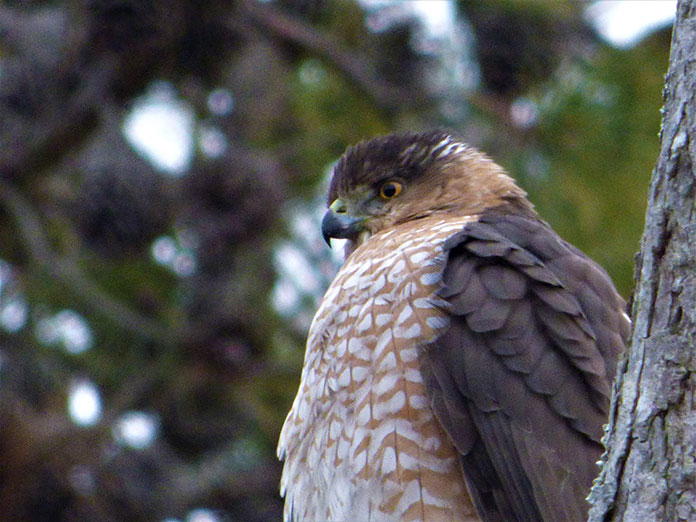
“We have an otter that comes through every once in a while,” shared Langella. “She had three of her pups with her and then moved on.”
While squirrels are commonplace in the area, Langella said he’s also spotted flying squirrels. Despite their nocturnal preference, they and raccoons have appeared in the early morning. Rabbits and deer complete the complement of Cloverdale’s regular warm-blooded population.
Many of the birds of Cloverdale have managed in the frigid temperatures. During a January bird walk, participants came across 22 different species of birds.
“We saw gold crown kinglets, chickadees, a titmouse, house sparrows, house finches,” Langella said. “Others we saw included blue jays, bluebirds, cardinals, and yellow rump wobblers.”
The birds seem to come out from deep in the woods when the sun is bright. They make their way to the edge of tree branches and seemingly strike poses for Langella’s waiting camera.
One of the most majestic sights that sticks in Langella’s memory was a bald eagle that was so young it didn’t have a white head and tail yet. The following year, the eagle reappeared but didn’t stay because the park’s waterway only has small fish.
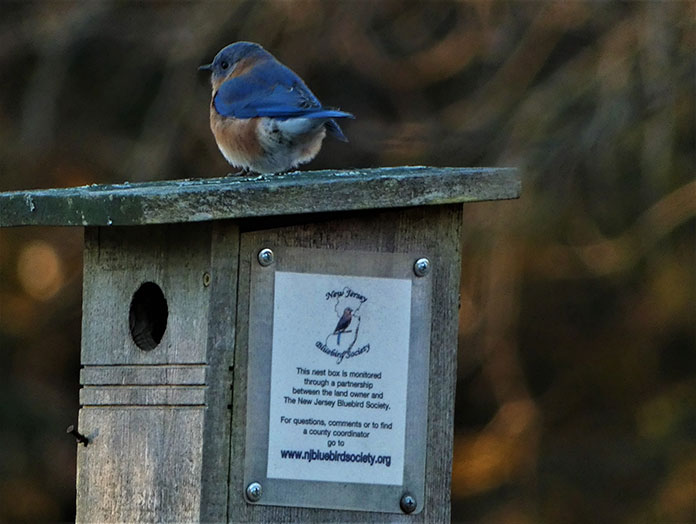
“We have a resident great horned owl who we call ‘Whiskey,’” shared Langella. “In the daytime, he looks tired as though he’s drunk.”
According to Langella, all types of hawks and vultures buzz through the park as well. They add to the circle of life that exists in the animal world.
“The hawks keep the squirrels in check,” Langella said, by way of example.
Langella’s love for the sights and sounds of Cloverdale prompted him to sign on as a park volunteer. He helps out with groups that visit the park, though he suggests there are other guides with more knowledge than his.
Cloverdale regularly attracts visitors during all seasons of the year, and not just because of the chance to see the wildlife. Scouts and civic groups are among the participants who learn how the cranberry bogs operate as they still exist on the property. The bog tours even provide the opportunity for guests to pick the berries and enjoy a taste of the luscious fruit.
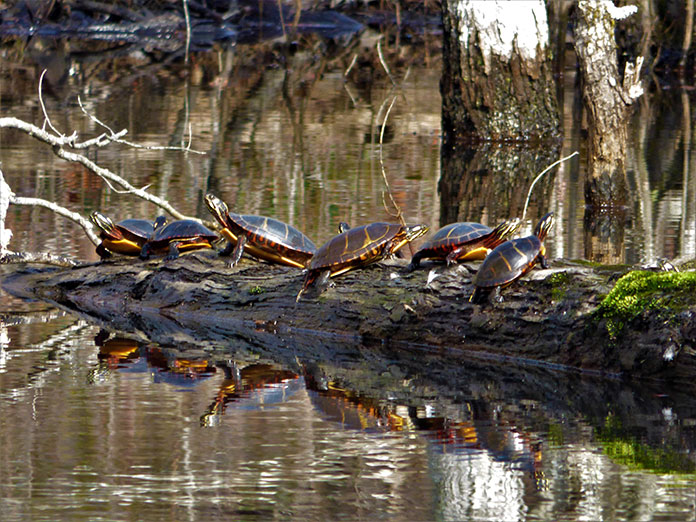
The park features both hiking and walking trails with a scenic view. Wildflowers indigenous to the Pine Barrens add color, as do water flowers that serve as landing pads for frogs in the spring. Turtles who bury themselves in the mud until it warms up also provide an interesting sight for those who explore the area.
Trasferino runs several programs at the park that focus on different natural attractions. For example, the next monthly bird walk is on February 19, and a nature walk is scheduled for February 26. A special children’s program is also on the calendar for February 26 to teach kids about the natural world around them.







